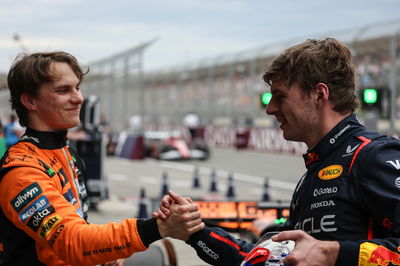Brawn admits Mercedes 'got weight distribution wrong'

Ross Brawn has admitted that Mercedes Grand Prix's early-season difficulties in maintaining the pace right at the front of the field in F1 2010 are largely due to a fundamental design error in the W01's weight distribution - an area the Englishman hopes will be improved for the forthcoming Spanish Grand Prix in Barcelona.
Understeer has plagued the reigning double world champions' efforts thus far this season, affecting returning legend Michael Schumacher in particular. The fault for that has now been pinned on the failure to achieve a perfect weight distribution on the team's short-wheelbase challenger in the light of the narrower front tyres in 2010, a situation that Brawn hopes will be rectified by way of a significant upgrade package set to be introduced for the beginning of the European leg of the campaign around the Circuit de Catalunya next weekend.
"The problem actually is not the wheelbase per se," he told ITV-F1. "The problem was that we got the weight distribution wrong. When we got to start trying these tyres we realised we didn't have the correct weight distribution. We immediately went to the limit of what we could achieve with the car.
"The tyres changed quite a bit; we had the small front, then there was a rear and then the rear changed again. None of us had the opportunity to try these tyres and we didn't make as good a guess of what we wanted in terms of weight distribution as some of the other teams. We've got a modification of the car coming for Barcelona, which puts us into a better range for the weight distribution we can achieve."
Mercedes presently sits in fourth sport in the constructors' title standings, and in terms of competitiveness the Brackley-based outfit lags behind Red Bull Racing, Ferrari and similarly-powered McLaren-Mercedes, all of whom have triumphed over the opening four grands prix.
A McLaren-style F-duct is also in the pipeline for the not-too distant future, with the innovative concept having been credited with helping to boost the straight-line speed of its Woking rival's MP4-25. Mercedes tried out a hybrid rear wing-stalling device in the last race in Shanghai - but Brawn insists that was far from the full development.
"I think the McLaren system, which is a very clever system, is quite complicated to get to work properly," the 55-year-old explained. "Basically, it means you can reduce the drag with a driver action at any particular time - so as soon as you get onto a straight you are not traction-limited, and when you've reached a point where you have enough grip, you can turn the rear wing off.
"That of course loses you drag and gains straight-line speed. It is a complicated system and one that McLaren has obviously conceived their car to accommodate, and it's not so easy to put into cars that have already been designed.
"What we had [in China] and will probably have for a race or two is just a simple passive system - it's not a driver-operated system - and it's an interim [solution] which is not as effective as the McLaren system, but is a little bit better than nothing at all. We're still working on the proper system, which we'll have in Barcelona or Istanbul. There's no point in having it in Monaco."










